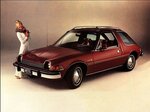


It’s 1974 all over again in the car world, and maybe in the overall world.
That’s been my thinking as I’ve reviewed the parade of new mass market automotive designs in 2024. There’s been a marked departure in the profile of this year’s cars that some are calling downright weird. If you’ve come across Tesla’s Cybertruck on the road, you’ll probably agree it’s … let’s say, unusual. It may not prompt you to think specifically about 1974.
But, please, hear me out.
Then, seemingly just like that, the times changed. Rachel Carson’s influential book “Silent Spring” started to hit home, and the obvious pollution all around us led to a push to decrease automobile exhaust emissions (remember the ubiquitous bumper sticker “Give a hoot, don’t pollute?”)
At the same time, the Vietnam War had claimed the lives of 50,000 young people, and Americans didn’t want more of that. With many teens and 20-somethings injured or dying in these powerful muscle cars, consumers began pushing for safer cars.
Finally, let’s not forget the early 1970s OPEC oil embargo led to increasing gas prices. That sparked a new desire for fuel-efficient cars.
All of that led to what I would call a decade of chaos. And 1974 to 1984 was just that. It was a decade in car design that’s best described by America saying, “We may not know what we want, but we certainly know what we don’t want.”
During that time of chaos and uncertainty, we saw the death of the muscle car, the decline of the large American luxury car, and the onset and introduction of lots of weird cars, like the AMC Pacer and Gremlin, Ford Pinto, Chevy Vega, a Corvette with just 180HP, the Subaru Brat, and the DeLorean.
By 1984, America finally figured out what it wanted: Japanese quality and German driving feel (fuel economy was less crucial thanks to increased availability of oil from non-OPEC sources, and catalytic inverters and other advances had dramatically reduced tailpipe emissions).
As a result, the Mercedes E-class, S-class, SL, as well as BMWs like the 3-series and 5-series were basically sold out, and it was the same for the Honda Accord, the Toyota Corolla and Camry, and, in the late ‘80s and early ‘90s we saw the birth of Lexus, Infiniti, and Acura. The era of “Japanese quality, German driving characteristics, and ever-improving fuel economy and emissions” extended from roughly 1984 to where we are now. It was around 40 years of people being relatively happy with their cars, just like they were from 1963 to 1973.
Interestingly, during this period we had reborn muscle cars, although this time it was Mercedes AMG models, BMW M-models, Audi RS-cars, in addition to American muscle cars like the Ford Mustang GT, Dodge Challenger Hellcat, and Chevrolet Camaro SS. We were also pleased by the rise of luxury SUVs, like the Cadillac Escalade, Mercedes GLS, Porsche, Cayenne, and others. And we also enjoyed the rise of uber-luxury cars like Bentley, Rolls-Royce, Range Rover, Lamborghini, and Aston Martin.
During this time, those brands all grew and set many sales records. In addition, pickup trucks became not only everyday drivers, but luxury vehicles (the Ford F150 Platinum and Ram Tungsten are just two examples). Again people, until maybe just two or three years ago, were happy.
However, as in 1974, times have changed in big, tectonic ways. I would argue that we’re no longer happy with their automotive choices, just as people weren’t happy in 1974 with their choices.
So, what’s happening? For starters, we have increasingly virtual lives. Since Apple’s iPhone was introduced in 2007 we have increased the time we spend with virtual friends as well as people that we don’t know but follow online.
If you’re older than 45, think of your high school friends. It used to be that we would write an occasional letter or phone call or email, but really, we would lose touch. Now we’re all in regular contact, or at least we follow those friends on social media apps like Facebook, Instagram, or TikTok. We are now increasingly broadcasting our lives and thoughts, even our most personal and intimate moments, on TikTok or other platforms. We’re working virtually more and more. As a result of this new reality of living and working online, people are less and less interested in driving.
There is also a general desire to put less CO2 into the air. The environmental movement has great traction now, and increasingly people are not comfortable with cars that produce and emit lots of CO2, like the Cadillac Escalade. So, going forward, get ready: 2024 to 2034 will be a period of chaos and creativity in automotive design, just like the years 1974 to 1984. We’ll see more and more eco-cars producing less and less CO2. We’ll see the rise of self-driving cars, which will allow us to spend more time either consuming or producing content on social media (or working).
In addition, we’ll observe the death of performance internal combustion cars—that’s already happening with the death of the Challenger, Camaro, and some V8 German muscle cars. And I think that big internal combustion luxury SUVs and personal use pickup trucks will fade away over the next 10 years. They just don’t make much sense, honestly.
Just like 1974-1984, we’re already seeing some weird cars. The weirdest, of course, is the Tesla Cybertruck, but the Cadillac Celestiq, Waymo Jaguar I-Pace, and others are also weird, and presumably more will be coming.
I think that right now is like 1974. We may not be happy about what we have, but we don’t really know what we want.
Yes, indeed, it’s an interesting time.
Stephen Schutz has covered the automotive world for more than 30 years as a syndicated writer and podcast host. Read his column monthly in The Cricket.